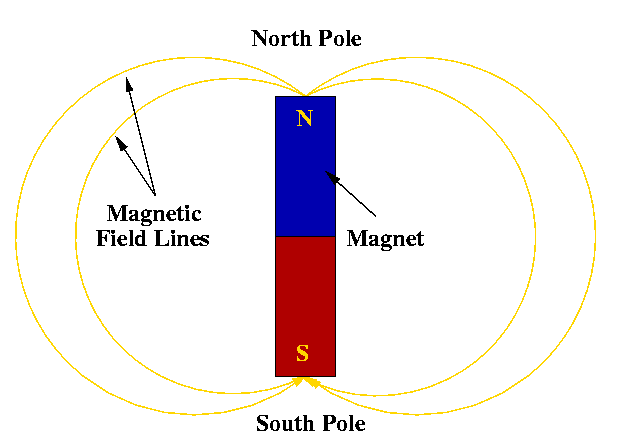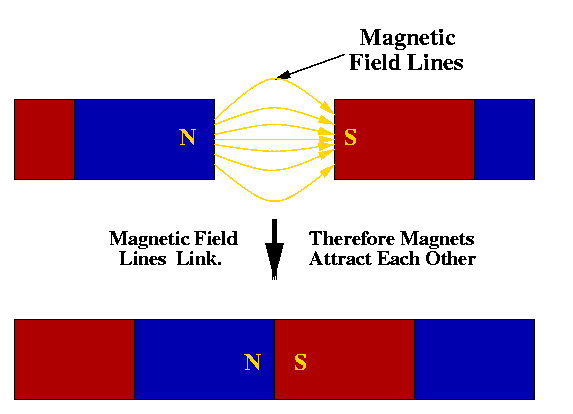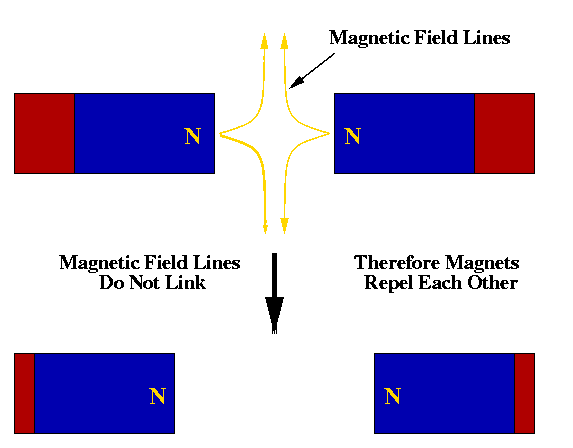 |
 |
 |
| |
|
|
However, the magnetic fields of one magnet also exert a magnetic force on other magnets. Take two magnets and place them next to each other. When unlike poles, i.e. the north
and the south poles of two magnets are placed close to each other, the magnetic field lines link, causing the magnets to attract each other. If on the other hand, the like
poles, i.e. the north and the north pole (or the south and the south pole) are placed close to each other, the magnets do not link and the magnets repel each other.
This is why the needle in a compass always points north/south. The magnetic north pole of the earth attracts the magnetic south pole of the compass needle. Therefore the
magnetic south pole of the compass needle points towards the north pole of the earth. If you place a strong magnet next to the compass needle, the needle will turn and point
towards the north pole of the magnet. If you remove the magnet the needle will return to its initial position.
However, you do not necessarily need a magnet to obtain a magnetic field. Magnetic fields can also be generated by moving charges (electrons or positively/negatively charged atoms). Thus electrical currents, which are basically just moving electrons flowing along a wire generate a magnetic field. This was discovered by the French physicist Andre Marie Ampere (1775-1836). This effect can be illustrated by a very simple example.
 |
All you need to perform this experiment is two pieces of wire, a battery, a coil of wire and a compass. Connect the wire and the coil to the battery as shown above. As soon as you do this an electric current starts to flow through the wire and the coil. This electric current generates a magnetic field in the coil as shown in the figure. The magnetic field then makes the needle of the compass turn towards the coil. As soon as you disconnect one of the wires from the battery the compass needle will return to its initial position.